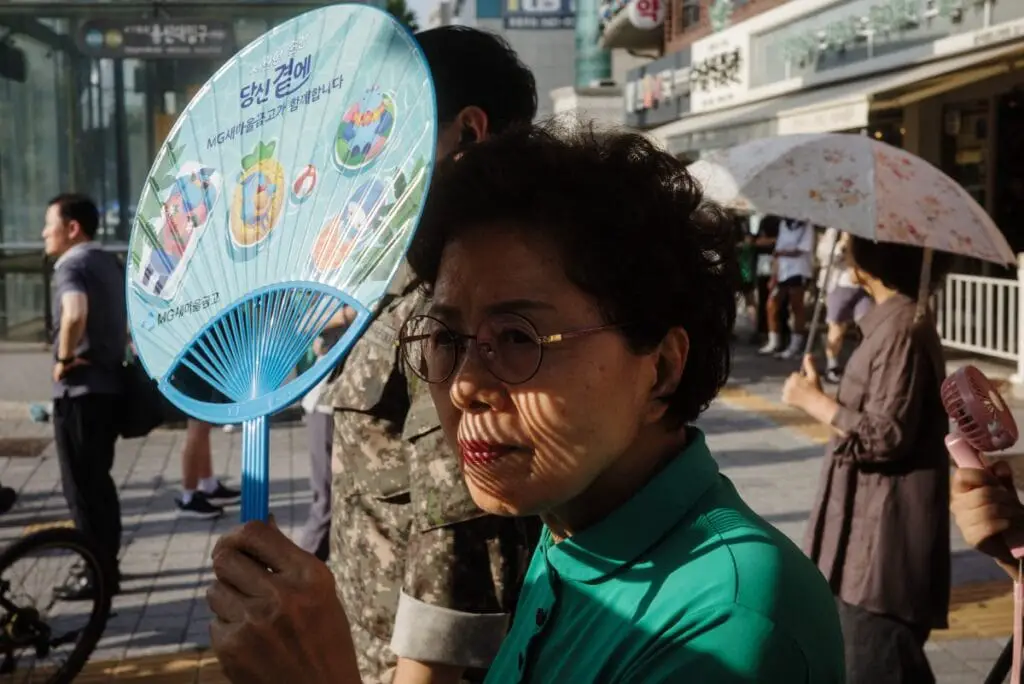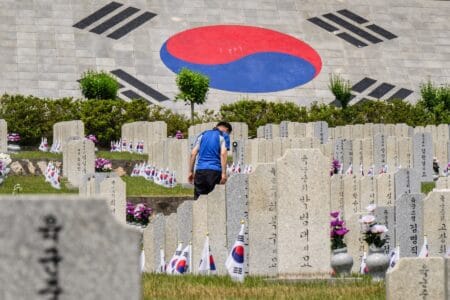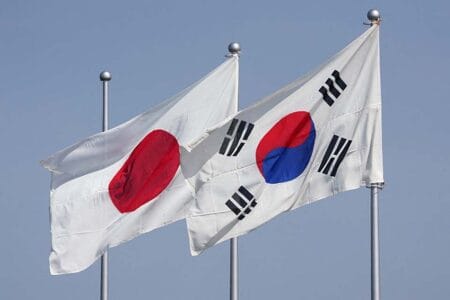August 22, 2025
SEOUL – Though Saturday marks “cheoseo” — South Korea’s seasonal marker that traditionally signals the end of summer — extremely hot temperatures, accompanied by heat wave watches and tropical nights, are expected to continue into next week.
According to the Korea Meteorological Administration, heat wave watches were in effect in most parts of the country, excluding mountainous regions, as of 4 p.m., Thursday. Nationwide apparent temperatures reached as high as 36 degrees Celsius that day.
Heat wave watches and warnings in Korea are issued when the maximum apparent temperature is expected to remain above 33 C and 35 C, respectively, for two or more consecutive days.
The KMA added that the recent heat stems from the Tibetan high-pressure system expanding above the Korean Peninsula, while hot, humid air continues to flow into the country along the edges of the North Pacific high-pressure system.
During Thursday’s press briefing, the KMA added that the heat will further intensify over the weekend.
The two high-pressure systems will continue to overlap above the peninsula, pushing temperatures up by an additional 1 C to 2 C.
On both Saturday and Sunday, low temperatures are expected to range between 22 C to 28 C and 22 C to 27 C, respectively, while high temperatures during the day are expected to range between 31 C to 36 C on both days.
From early next week, cool air is expected to flow into the Korean Peninsula from the north, colliding with the hot, humid air to eventually form a low-pressure system. The KMA added that rainfall is expected to fall in the central region on Aug. 26 as the system moves north.
After the low-pressure system moves out, the KMA expects the high-pressure systems to regain their grip over the country.
“While numerical forecast models diverge slightly on the exact location of the North Pacific high-pressure system’s edge, most suggest it will extend over to North Korea or at least in the northern parts above the Greater Seoul region, which is normally a sign that the heat will linger for some time,” said KMA meteorologist Gong Sang-min. Greater Seoul includes the capital, Incheon and Gyeonggi Province.
In its monthly outlook released Wednesday, the KMA added that September temperatures are also expected to remain above seasonal norms.
For the first, third and fourth week of September, there is a 50 percent chance of higher-than-average temperatures, with only a 10 percent likelihood of cooler-than-normal conditions. In the second week, the probability of seeing above-normal temperatures rises to 60 percent.
“Though this does not necessarily mean that heat waves will continue deep into autumn, such indicators show that breaking away from ‘warmer-than-usual’ temperatures may be difficult,” KMA official Woo Jin-kyu told The Korea Herald.







